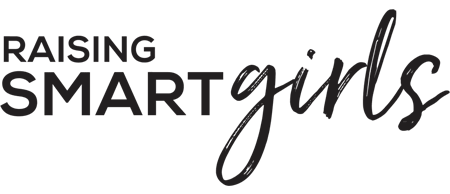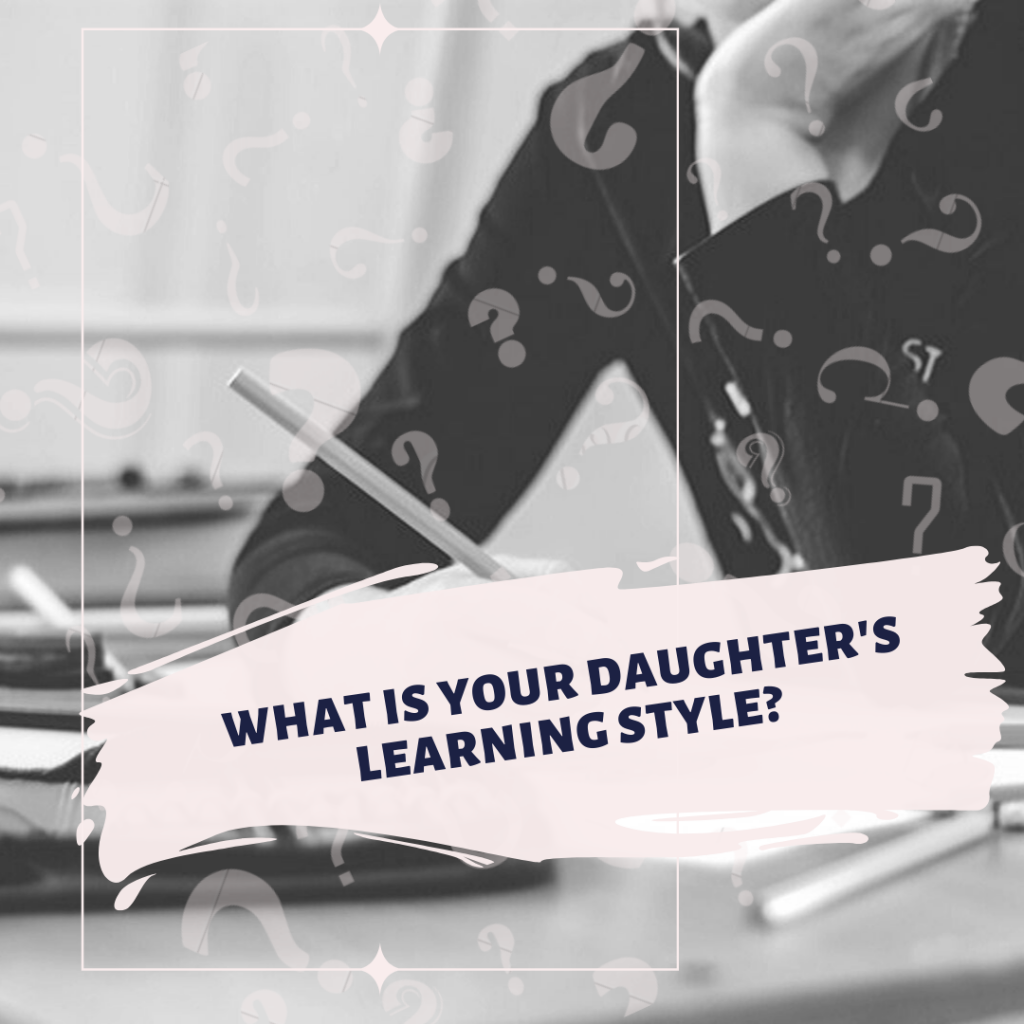Certain factors can impact the way your child learns; not all approaches work for all students. To give your child the best learning outcomes, it is important to understand how she learns. From there, you can provide her with the support she needs to reach her full potential. Many teachers ask parents about their children’s learning styles at the beginning of the school year. Use this information on the different types of learning styles to help identify how your daughter learns best.
Visual/Spatial Learner
Visual learners learn best when they can see a representation of what they are learning about. For these students, pictures and videos can be helpful, along with other types of visual learning aids. Your child might be a visual learner if she prefers using maps, pictures, and other visual aids to help her process new information. Visual learners tend to have a good sense of direction and are good visualizers.
Two tips for helping your visual learner study:
- Make a concept map about big topics. These look like mind maps starting with the topic in the middle. They will help your child visualize how subtopics and ideas relate to the main topic of study.
- Incorporate doodling and images. As your child starts to get into chapter books with fewer visuals, encourage doodling to help visualize the story better.
Auditory/Musical Learner
Auditory-musical learners respond best to sound and music. Unfortunately, the auditory learning style isn’t engaged in the classroom very often because auditory learning is typically done in music classrooms alone. Your child might be an auditory learner if she uses rhythm or rhyme to memorize content. Auditory-musical learners often feel a connection to music and enjoy listening to it, and they also tend to have musical abilities.
Two tips for helping your auditory learner study:
- Always find a quiet place for your child to study. It is easy for auditory learners to be distracted.
- Use a jingle to remember dense content. Fortunately, youtube has a lot of educational videos that feature jingles to help remember a lot of content. For example, this jingle from Jam Campus is not only fun and catchy but will help your child remember the skeletal system.
Verbal/Linguistic Learner
Verbal learners learn best with verbal instruction that is paired with writing. These learners typically like reading and writing and excel in those areas. Your child might be a verbal learner if she processes and memorizes information by reading or writing words and definitions. Verbal learners often express themselves by speaking and writing.
Two tips for helping your verbal learner study:
- Use word associations whenever you can.
- Encourage your child to take detailed notes about what they are learning and then explain the notes out loud.
Physical/Kinesthetic Learner
Physical learners learn best when they’re able to move. They’re often interested in touching, feeling, and exploring as they learn. Your child might be a physical learner if she needs to do something to learn it and seems to be constantly on the move. Physical learners focus on the physical aspects of life and often enjoy being active in sports. They also utilize body language more than other kinds of learners.
Two tips for helping your Physical learner study:
- Use flashcards to add some movement into the study time, and plan for several short breaks.
- Engage in role-playing whenever it makes sense. It will be a fun way to get your child moving and help the material come to life.
Logical Learner
Logical learners have a unique way of learning. When logical learners learn new information, they want to understand how exactly it works. They want to know the reasoning for something. This concept is especially true for math and science-based concepts. Your child might be a logical learner if she only learns something when she understands all of the reasoning and logic behind it. Logical learners enjoy planning, creating procedures, and making calculations.
Two tips for helping your logical learner study:
- Encourage your child to organize her work in the order and structure that makes the most sense for her.
- It is also helpful for your child to group similar learning content together when trying to absorb new material.
Social Learner
Social learners work well in groups. They learn best when they are collaborating with their peers and can get feedback. Then, they learn from that feedback. Your child might be a social learner if she prefers to work with others and works well in groups. Social learners often listen well and enjoy socializing. They also enjoy working through issues in a group setting instead of alone.
Two tips for helping your social learner study:
- Help her find study groups or offer to sit with her often while doing homework. Social learners thrive on interaction.
- Provide opportunities for her to present what she is learning to the family.
Solitary Learner
Solitary learners prefer to learn independently. They tend to keep to themselves and work best alone. Most commonly, solitary learners are introverted. Solitary workers are typically focused on goals. Your child might be a solitary learner if she prefers to sit alone and learns best by working independently. Solitary learners often keep a journal and self-analyze often.
Two tips for helping your solitary learner study:
- Encourage your child to keep a journal to help sort out her thoughts.
- When working on projects, give her time to independently think through it before coming back to working with a group.
Teaching Styles
Teaching styles can also greatly impact your daughter’s learning. Certain types of learners work better under different types of teaching. Read here for more information on the most common styles of teaching and how they could affect your learner.
Some teachers use teaching styles that may not be effective for your student. It’s important to be aware of the teacher’s style, so that you can understand how you might need to help your child adapt. Ideally, the teacher will use a combination of teaching styles for the most effective approach. This combination allows the teacher to reach all of his/her students and to help all of them learn best. This style also allows students to learn content in a variety of ways.
Some teachers use teaching styles that may not be effective for your student. It’s important to be aware of the teacher’s style, so that you can understand how you might need to help your child adapt.
Teachers’ styles fall into five distinct categories:
- The authority style. This style is used when a teacher gives a one-way lecture. This strategy isn’t as engaging as other strategies, because it doesn’t require students to participate. Usually, students are expected to take notes as the teacher lectures on the content. This style isn’t seen in elementary classrooms as often as it is in middle school classrooms and higher. Times exist when this style is necessary, but much research show it is not often the best way students learn.
- The facilitator style. This style is known as an activity-based style. Teachers who use this style allows students to explore concepts and learn on their own. Teachers typically increase peer to teacher learning. This increase allows teachers to ask students questions as they learn. Then, teachers can provide students with additional information and guidance as needed. These types of activities allow students to develop problem-solving skills. When teachers are facilitators, they need to continue to interact with the students as they explore the content for themselves. This factor is easier to do in some rooms than in others, so the room’s layout is important.
- The demonstrator style. When a teacher is a demonstrator, he/she remains in authority over the classroom. This style is similar to the authority style, but it includes additional elements to contribute to student learning. The teacher may use other forms of teaching, such as videos, activities, demonstrations, and more. This information allows students to be more engaged than they would in the authority style, but it still lacks a lot of teacher-student interaction.
- The delegator style. Teachers may use the delegator style for group work or labs. This style allows a teacher to observe the students as they work and to provide assistance as needed. The delegator style also allows students to learn from each other, which benefits all of the students involved. This observation is a good way for teachers to encourage collaboration in the classroom and to help build important social skills. It helps students explore and discover new concepts with the guidance of their teacher.
- The hybrid style. The hybrid or blended style mixes the teacher’s personality with the needs of the students. The teacher’s interests and preferences are often involved in this style of teaching. It also includes curriculum-based methods. This style helps teachers meet every student’s needs, which can lead to a deeper understanding of the topic for each one. Concerns about the hybrid style are that it can weaken a learning process because the teacher tries to be too many things to all students.
More often than not, you do not get to choose your child’s teacher. Advocate for your daughter by sharing her best learning style with new teachers.
More often than not, you do not get to choose your child’s teacher. Advocate for your daughter by sharing her best learning style with new teachers. Qualified teachers use a variety of styles to reach students, but understanding their students’ needs takes some time. By being aware of the different learning and teaching styles, you can ensure that your child gets the best education possible. It is important you also note your informal learning style and how it affects you when you’re helping her at home. When you are helping with homework, are you coaching and supporting the child the way her learning style requires? Moreover, empowering your child with knowledge of how she learns best helps her become her own best self-advocate throughout her learning journey.

